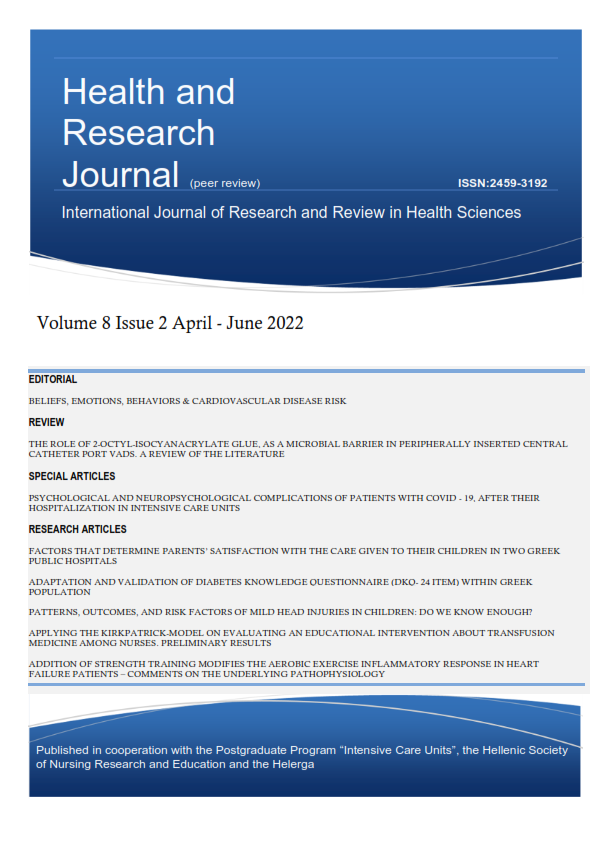Applying the Kirkpatrick-Model on evaluating an educational intervention about transfusion medicine among nurses. Preliminary results

Abstract
Background: Implementation of systematic and sustainable training in theoretical and practical aspects of transfusion, maximizes transfusion-safety and improves quality of nursing services. Kirkpatrick-Model can be used effectively for evaluating such educational programs.
Method and Materials: According to Kirkpatrick-Model, evaluation of educational programs is determined by four levels: 1st-Reaction, 2nd-Learning, 3rd-Behavior, 4th-Results. During years 2018-2019, an educational program about transfusion-medicine (presentations-lectures, brochures distribution, individual training) was implemented among nurses working mainly in an Oncology Hospital of the Hellenic National Health System. Demographics, educational/professional experience, knowledge-level on transfusion-medicine as well as suggestions for improving it, were checked with pre-and post-training questionnaires. Statistical analysis was made using SAS9.4-software for Windows/Excel 2007 (Kruskal-Wallis method for numeric parameters, x2-test for categorical). The significance level was set to P<0.05.
Results: Regarding trainees’ reaction (level 1), 38.59% considered the educational program “satisfactory” (before training, 13.67% answered that they needed no training, after training 52.26%, P<0.05).
Regarding learning (level 2), there was improvement in knowledge (14.2±3 correct answers/respondent before training, 21.1±1.8 correct answers/respondent post-training, 48.6% increase in correct answers/respondent, P<0.000001).
The evaluation of the trainees' change of work-behavior due to training (level 3) will be performed through an extended observation-period by auditors using an extensive evidence-based observatory checklist. The overall outcome of training (level 4) will be assessed after completing the above-mentioned audits.
Conclusions: According to Kirkpatrick-Model, the applied educational program is evaluated positively in terms of levels 1-2, as it was considered sufficient by trainees and improved their theoretical knowledge. Further evaluation in terms of levels 3-4 is an ongoing procedure.
Article Details
- How to Cite
-
Argyrou, A., Pouliakis, A., Gafou, A., Tsoumakas, K., Mariolis- Sapsakos, T., & Fildisis, G. (2022). Applying the Kirkpatrick-Model on evaluating an educational intervention about transfusion medicine among nurses. Preliminary results. Health & Research Journal, 8(2), 133–145. https://doi.org/10.12681/healthresj.29191
- Section
- Original Articles
Copyright notice:
The journal "Health and Research Journal" reserves the rights for copyright of the content of the website and also the copyright of the articles published.
By virtue of their appearance in this journal, the articles are free to be used for non-commercial purposes. However, the articles cannot and must not be used in anyway, published elsewhere or modified without any reference to the author and the first publication of the article.


